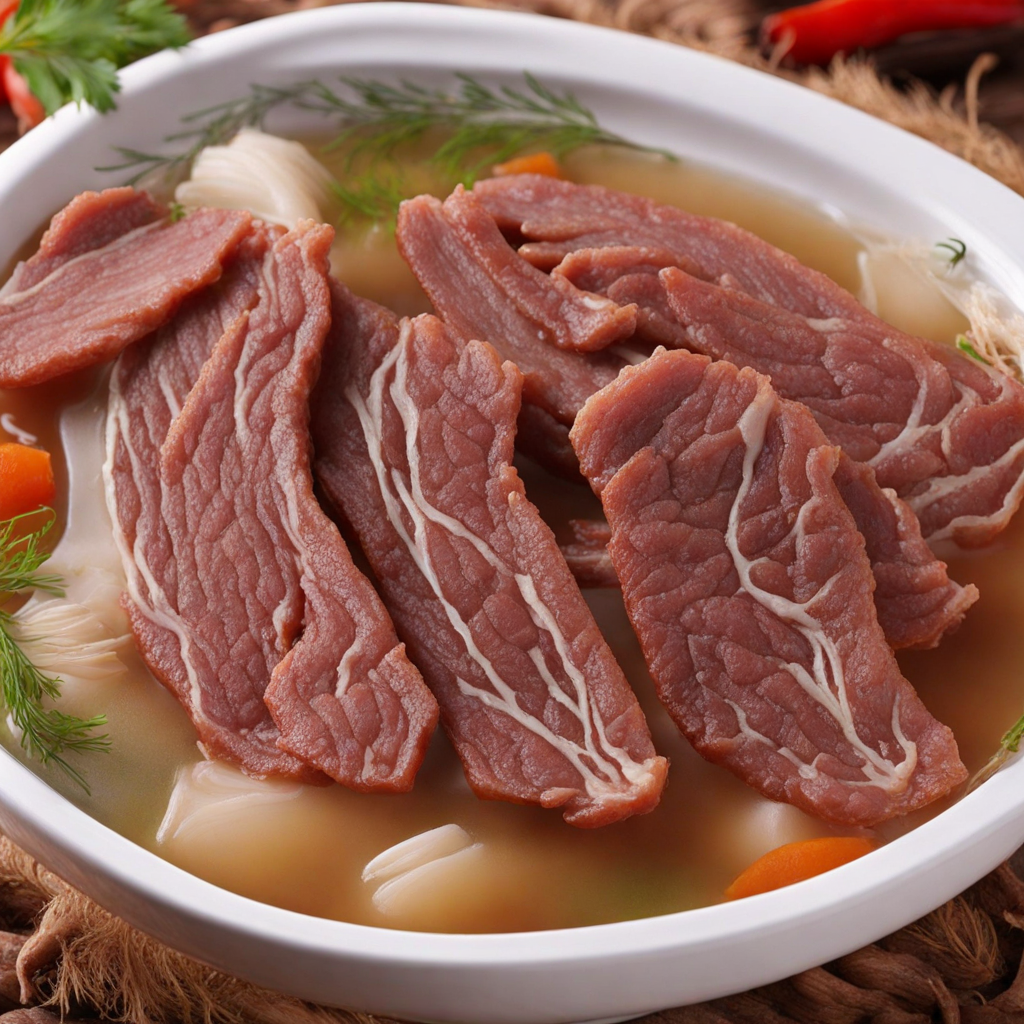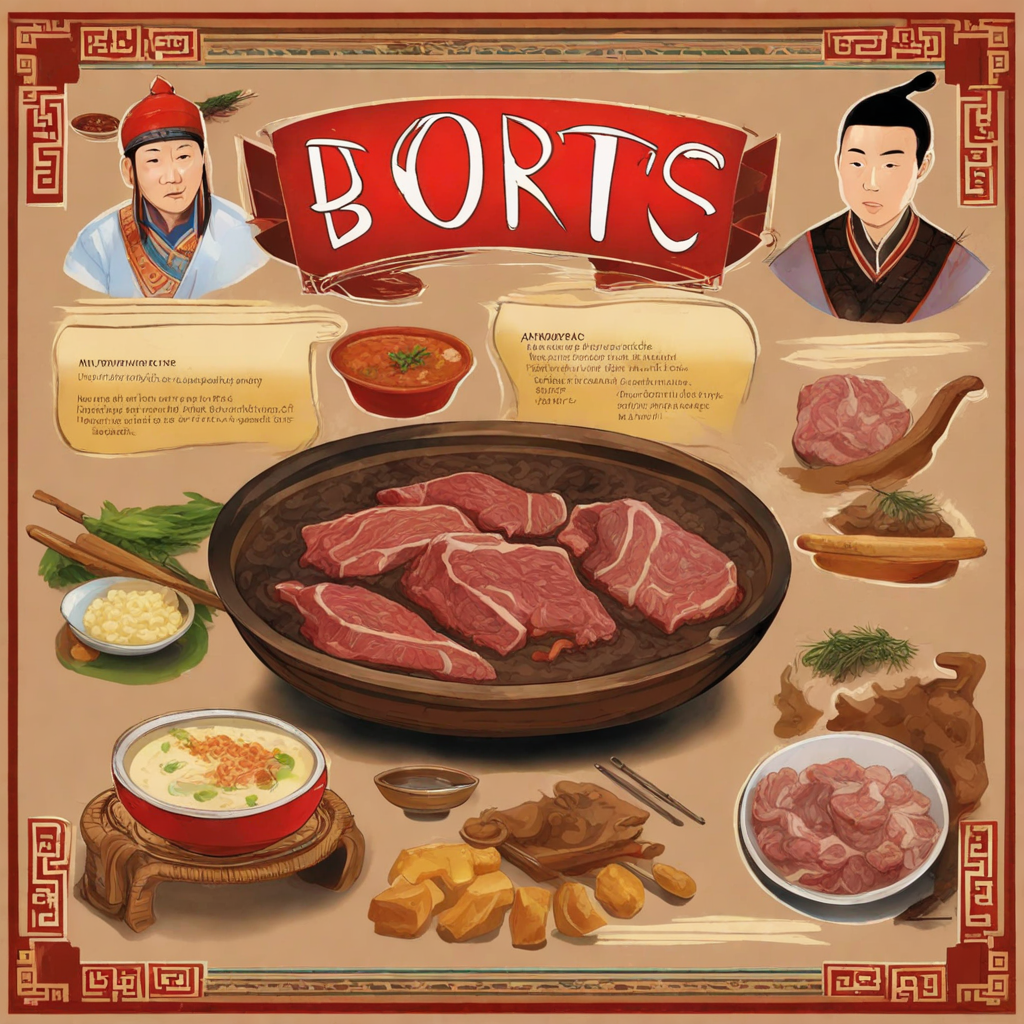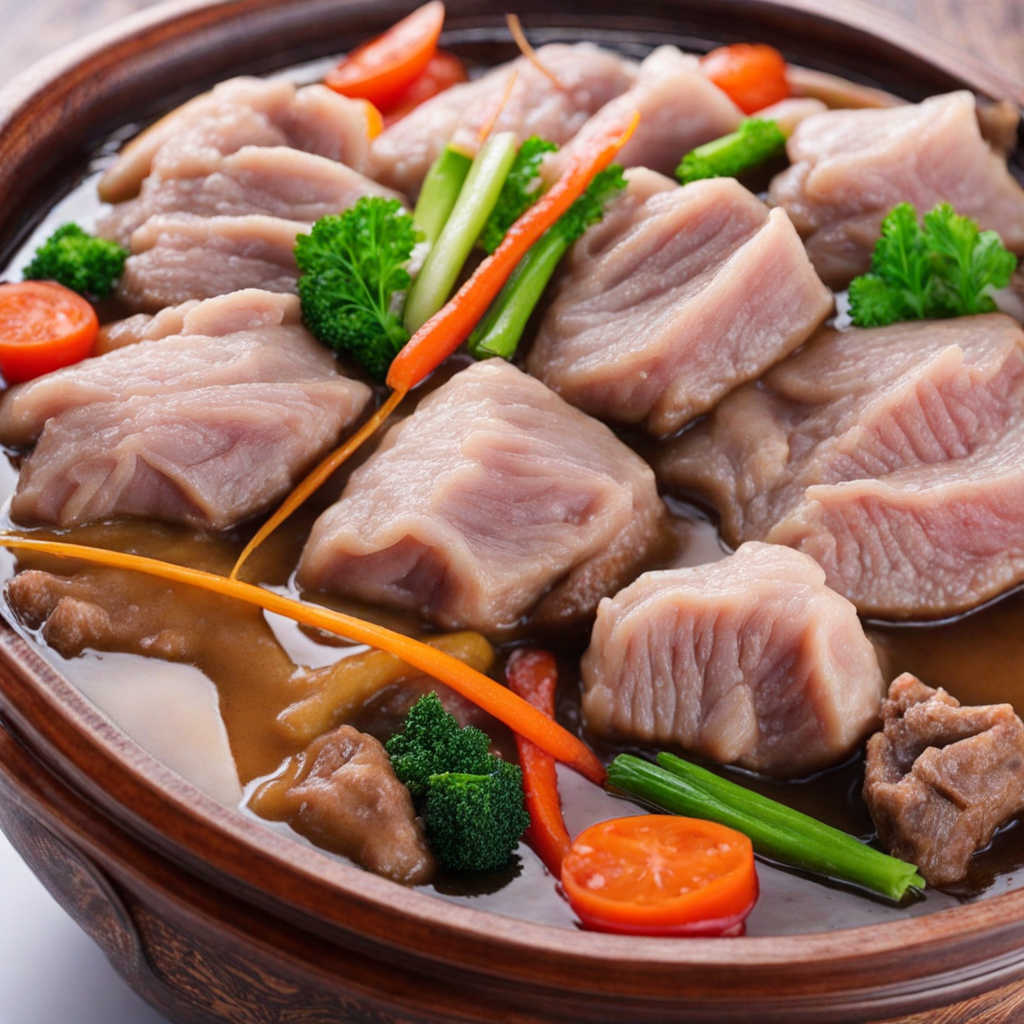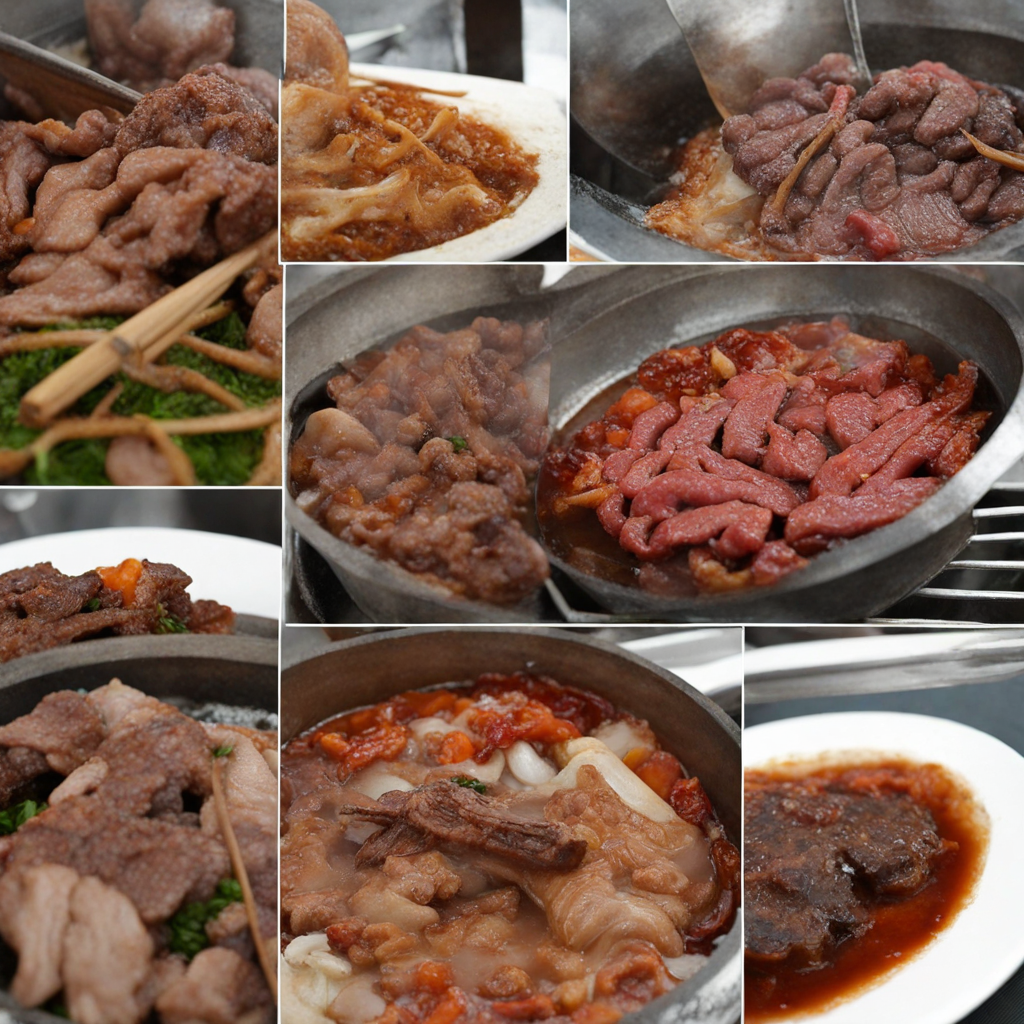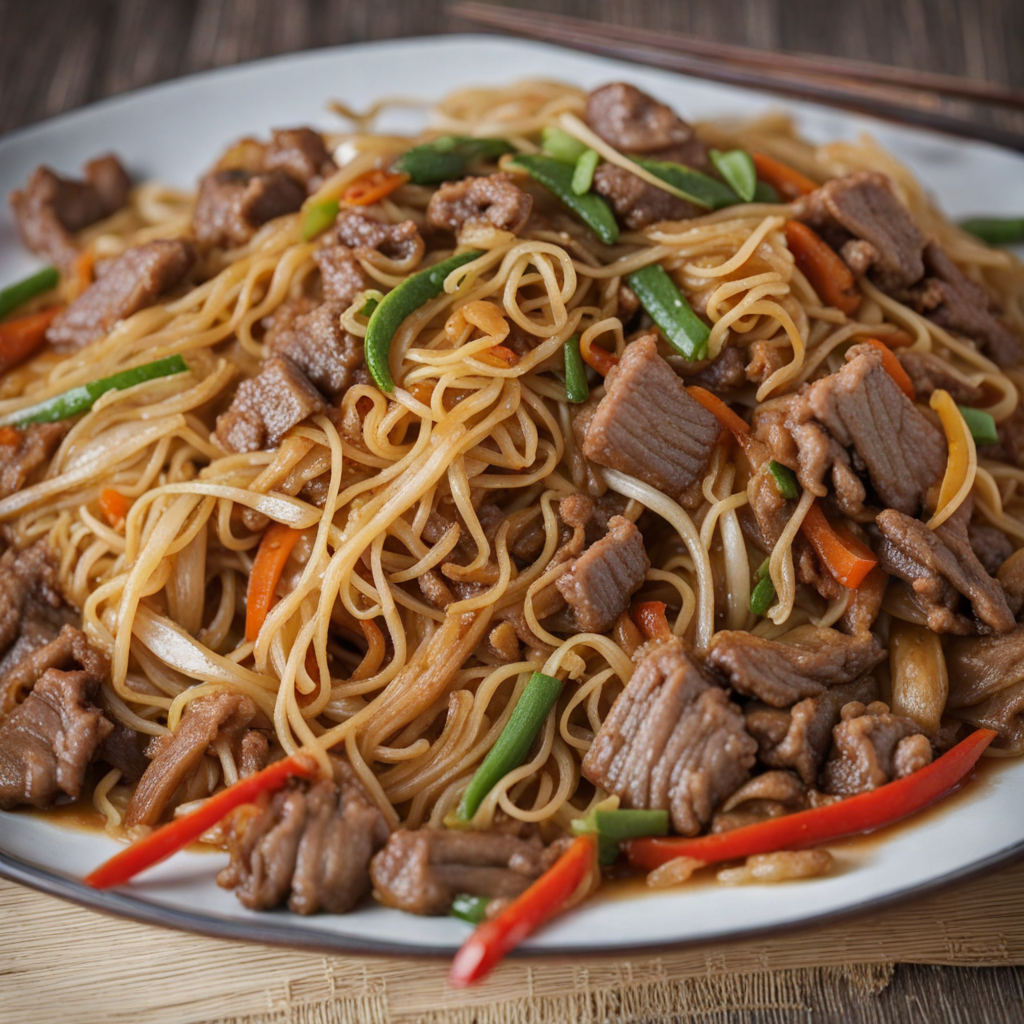Borts
'Борц' (Borц) is a traditional Mongolian dish that showcases the rich culinary heritage of the country, particularly its nomadic lifestyle and reliance on livestock. This dish is a type of dried meat, often made from beef or mutton, and is renowned for its portability and longevity, making it an essential food for herders and travelers in the vast steppe. Historically, Борц has been a staple for Mongolian nomads who needed sustenance that could withstand the harsh climate and long journeys. The practice of drying and preserving meat dates back centuries, allowing families to store food for the winter months when fresh supplies were scarce. This method of preservation is deeply rooted in Mongolian culture, which emphasizes the use of natural resources and the importance of livestock in daily life. As such, Борц has evolved into a symbol of resilience and adaptability, reflecting the Mongolian spirit. The flavor of Борц is intensely savory and rich, with a concentrated umami quality that comes from the drying process. The meat is often seasoned with a variety of spices, including salt, black pepper, and sometimes garlic, which enhances its taste and contributes to its preservation. The drying process imparts a unique texture, making the meat chewy yet tender, with a distinct aroma that is both earthy and robust. When rehydrated or cooked, Борц can release complex flavors that evoke the essence of Mongolia's rugged landscapes. Preparation of Борц involves several steps. First, high-quality cuts of meat
How It Became This Dish
The History of Борц: A Culinary Gem from Mongolia Mongolia, a land of vast steppes, rugged mountains, and nomadic traditions, is not only known for its stunning landscapes but also for its rich culinary heritage. Among the many dishes that define Mongolian cuisine, Борц (pronounced "borts") stands out as a significant and revered food item. This dehydrated meat product has played a crucial role in the sustenance and cultural fabric of Mongolian life for centuries. To understand the essence of Борц, we must explore its origins, cultural significance, and its evolution through time. Origins of Борц The history of Борц is deeply intertwined with the nomadic lifestyle of the Mongolian people. Traditionally, Mongolians relied on livestock such as sheep, goats, horses, and camels, which were essential not only for sustenance but also for their way of life. The harsh climate, characterized by long winters and short summers, posed significant challenges for food preservation. To combat the threat of spoilage, nomads developed various methods of preserving food, and one of the most ingenious was the creation of Борц. Bорц is essentially dried meat, commonly made from mutton, beef, or horse meat. The meat is cut into thin strips and air-dried under the sun and wind. This method of preservation not only extended the shelf life of the meat but also concentrated its flavors, making it a vital source of nutrition during harsh winters when fresh food was scarce. The practice of making Борц can be traced back to ancient times, rooted in the nomadic traditions of the Mongolian people, who were adept at utilizing their natural environment to ensure their survival. Cultural Significance In Mongolian culture, Борц is more than just food; it symbolizes resilience, resourcefulness, and the deep connection between the people and their land. It is a testament to the ingenuity of nomadic life, where every part of the animal is utilized, reflecting a philosophy of respect for nature and sustainability. The process of making Борц is often a communal activity, bringing families and communities together, fostering social bonds and cultural identity. Bорц holds a special place in Mongolian folklore and tradition. It is often featured in stories and songs that celebrate the nomadic way of life. The act of sharing Борц among friends and family is a gesture of hospitality and kinship. It is common to serve Борц during gatherings, feasts, and celebrations, emphasizing its role as a communal food that fosters togetherness. Additionally, Борц is often included in the traditional Mongolian diet, providing essential protein and energy, especially during the harsh winter months when other food sources may be limited. Development Through Time As Mongolia has evolved from its nomadic roots to a more modern society, the production and consumption of Борц have also transformed. In the past, each family would prepare Борц according to their own methods and preferences, with recipes passed down through generations. However, with the advent of commercial production and globalization, Борц has become more widely available, both within Mongolia and beyond. In urban areas, the traditional methods of making Борц are still cherished, but modern conveniences have introduced new techniques and flavors. For instance, some producers now use electric dehydrators and vacuum sealing to enhance the preservation process, allowing for more consistent quality and longer shelf life. Additionally, the emergence of specialty shops and online marketplaces has made Борц accessible to a global audience, introducing international consumers to this unique aspect of Mongolian cuisine. Despite these changes, the essence of Борц remains intact. It is still celebrated as a traditional food that embodies the spirit of Mongolia. In recent years, there has been a resurgence of interest in traditional foods among younger generations, who seek to reconnect with their heritage. Workshops and festivals celebrating traditional Mongolian foods, including Борц, have become popular, ensuring that this culinary tradition continues to thrive. Contemporary Culinary Scene Today, Борц is not only a staple in traditional meals but has also found its way into modern culinary innovations. Chefs and food enthusiasts are experimenting with Борц in various dishes, incorporating it into soups, stews, and even gourmet salads. This fusion of traditional and contemporary cuisine showcases the versatility of Борц and its ability to adapt to changing tastes while retaining its cultural significance. The globalization of food culture has also sparked interest in Борц beyond Mongolia's borders. Foodies and adventurers traveling to Mongolia often seek out authentic culinary experiences, including tasting Борц. Restaurants in Mongolia and abroad are beginning to highlight traditional dishes, and Борц is gaining recognition as a unique culinary offering that represents the flavors and traditions of the Mongolian people. Conclusion In summary, Борц is more than just a preserved meat product; it is a culinary symbol of Mongolia that embodies the resilience, resourcefulness, and cultural heritage of its people. From its origins as a practical solution for food preservation in the harsh Mongolian climate to its status as a beloved traditional food, Борц has transcended generations. Its cultural significance is deeply rooted in the nomadic lifestyle, where it fosters community and connection. As Mongolia continues to modernize, Борц stands as a bridge between the past and present, showcasing the enduring importance of traditional foods in contemporary society. Whether enjoyed in a yurt on the steppes or in a modern restaurant, Борц remains a testament to the rich culinary history of Mongolia, inviting all who taste it to partake in its storied legacy.
You may like
Discover local flavors from Mongolia


